Connect With Us
Blog
Items filtered by date: December 2024
Preventing Diabetic Foot Ulcers
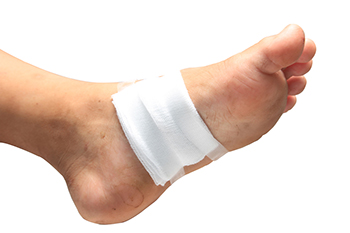
Recurring diabetic foot ulcers are a common issue for individuals with diabetes, often caused by poor blood flow and prolonged pressure on certain areas of the foot. These factors impair the ability to feel pain and delay healing, making it difficult to detect injuries early and increasing the risk of repeated wounds. Wearing tight or ill-fitting shoes, unaddressed foot deformities, and inadequate foot care can also contribute. Preventing recurrence starts with managing blood sugar levels to enhance healing and circulation. Regular foot inspections, wearing diabetic-friendly footwear, and keeping the skin clean and moisturized are essential. Proper offloading techniques, such as custom orthotics or specialized insoles, can reduce pressure on vulnerable areas. If you have recurring diabetic foot ulcers, it is suggested that you consult a podiatrist who can create a tailored treatment and prevention plan.
Wound care is an important part in dealing with diabetes. If you have diabetes and a foot wound or would like more information about wound care for diabetics, consult with one of our podiatrists from DM Foot & Ankle Associates . Our doctors will assess your condition and provide you with quality foot and ankle treatment.
What Is Wound Care?
Wound care is the practice of taking proper care of a wound. This can range from the smallest to the largest of wounds. While everyone can benefit from proper wound care, it is much more important for diabetics. Diabetics often suffer from poor blood circulation which causes wounds to heal much slower than they would in a non-diabetic.
What Is the Importance of Wound Care?
While it may not seem apparent with small ulcers on the foot, for diabetics, any size ulcer can become infected. Diabetics often also suffer from neuropathy, or nerve loss. This means they might not even feel when they have an ulcer on their foot. If the wound becomes severely infected, amputation may be necessary. Therefore, it is of the upmost importance to properly care for any and all foot wounds.
How to Care for Wounds
The best way to care for foot wounds is to prevent them. For diabetics, this means daily inspections of the feet for any signs of abnormalities or ulcers. It is also recommended to see a podiatrist several times a year for a foot inspection. If you do have an ulcer, run the wound under water to clear dirt from the wound; then apply antibiotic ointment to the wound and cover with a bandage. Bandages should be changed daily and keeping pressure off the wound is smart. It is advised to see a podiatrist, who can keep an eye on it.
If you have any questions please contact our office located in Lemont, IL . We offer the newest diagnostic and treatment technologies for all your foot and ankle needs.
We Can Treat Your Foot or Ankle Pain
Is Foot Pain Keeping You Up at Night?
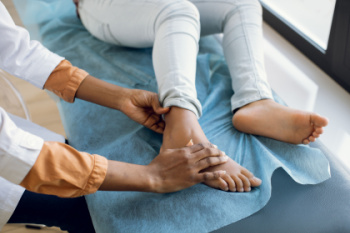
Nighttime foot pain can disrupt sleep and make restful nights a challenge for many people. This type of discomfort frequently stems from plantar fasciitis, where the plantar fascia, the band of tissue along the bottom of the foot, becomes inflamed due to stress or overuse. Another potential cause is Morton’s neuroma, which occurs when the nerves between the toes are pinched, leading to sharp, burning sensations. Peripheral neuropathy, often linked to diabetes, may cause tingling, numbness, or stabbing pain during the night. Lifestyle factors, such as prolonged standing, wearing improper footwear, or other weight-bearing activities, can aggravate symptoms. Structural foot conditions, including flat feet or high arches, may increase susceptibility to nocturnal foot pain. A podiatrist can assess the underlying cause of nighttime foot pain and offer professional guidance on managing your symptoms. If frequent foot pain is interrupting your sleep, it is suggested that you schedule an appointment with a podiatrist for an exam and treatment options.
Foot Pain
Foot pain can be extremely painful and debilitating. If you have a foot pain, consult with one of our podiatrists from DM Foot & Ankle Associates . Our doctors will assess your condition and provide you with quality foot and ankle treatment.
Causes
Foot pain is a very broad condition that could be caused by one or more ailments. The most common include:
- Bunions
- Hammertoes
- Plantar Fasciitis
- Bone Spurs
- Corns
- Tarsal Tunnel Syndrome
- Ingrown Toenails
- Arthritis (such as Gout, Rheumatoid, and Osteoarthritis)
- Flat Feet
- Injury (from stress fractures, broken toe, foot, ankle, Achilles tendon ruptures, and sprains)
- And more
Diagnosis
To figure out the cause of foot pain, podiatrists utilize several different methods. This can range from simple visual inspections and sensation tests to X-rays and MRI scans. Prior medical history, family medical history, and any recent physical traumatic events will all be taken into consideration for a proper diagnosis.
Treatment
Treatment depends upon the cause of the foot pain. Whether it is resting, staying off the foot, or having surgery; podiatrists have a number of treatment options available for foot pain.
If you have any questions, please feel free to contact our office located in Lemont, IL . We offer the newest diagnostic and treatment technologies for all your foot care needs.
Causes of a Broken Pinky Toe
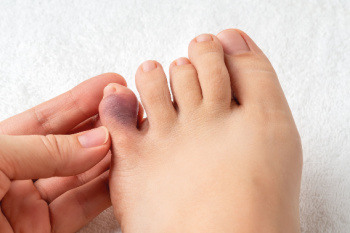
A broken pinky toe typically occurs due to trauma or injury, such as stubbing the toe on furniture, dropping something heavy on the foot, or participating in high-impact sports. The force from these events can cause the bone to crack or break. Symptoms of a broken pinky toe include pain, swelling, bruising, and difficulty moving the toe. In some cases, the toe may appear misaligned. Treatment for a broken pinky toe usually involves rest and elevation to reduce swelling. A buddy taping method, where the injured toe is taped to the adjacent toe for stability, may be used. In more severe cases, where the toe is significantly displaced, a podiatrist may need to realign the bones or, in rare cases, use a cast. If you have fractured your pinky toe, it is suggested that you contract a podiatrist who can offer you effective treatment remedies.
A broken toe can be very painful and lead to complications if not properly fixed. If you have any concerns about your feet, contact one of our podiatrists from DM Foot & Ankle Associates . Our doctors will treat your foot and ankle needs.
What to Know About a Broken Toe
Although most people try to avoid foot trauma such as banging, stubbing, or dropping heavy objects on their feet, the unfortunate fact is that it is a common occurrence. Given the fact that toes are positioned in front of the feet, they typically sustain the brunt of such trauma. When trauma occurs to a toe, the result can be a painful break (fracture).
Symptoms of a Broken Toe
- Throbbing pain
- Swelling
- Bruising on the skin and toenail
- The inability to move the toe
- Toe appears crooked or disfigured
- Tingling or numbness in the toe
Generally, it is best to stay off of the injured toe with the affected foot elevated.
Severe toe fractures may be treated with a splint, cast, and in some cases, minor surgery. Due to its position and the pressure it endures with daily activity, future complications can occur if the big toe is not properly treated.
If you have any questions, please feel free to contact our office located in Lemont, IL . We offer the newest diagnostic and treatment technologies for all your foot care needs.
Understanding Ingrown Toenail Surgery
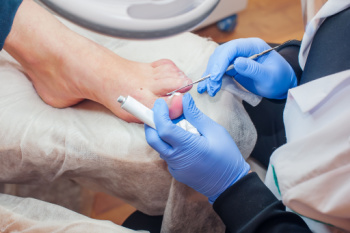
An ingrown toenail develops when the edge of the nail grows into the surrounding skin, causing pain, swelling, and redness. This common condition often affects the big toe and can lead to infection if left untreated. Symptoms include tenderness, throbbing pain, and the presence of pus or drainage. The causes of ingrown toenails include improper nail trimming, wearing tight shoes, or trauma to the toe. People with certain foot shapes or conditions like diabetes may be at higher risk of ingrown toenails. Treatment options vary depending on severity. A wedge resection is a surgical procedure in which a small portion of the nail is removed to alleviate pressure. In some cases, partial toenail removal may be recommended to prevent recurrence. If you are experiencing pain from an ingrown toenail, a podiatrist can offer effective solutions, from conservative treatments to surgery. It is suggested that you schedule an appointment with this type of doctor for treatment and relief.
Ingrown toenails can become painful if they are not treated properly. For more information about ingrown toenails, contact one of our podiatrists of DM Foot & Ankle Associates . Our doctors can provide the care you need to keep you pain-free and on your feet.
Ingrown Toenails
Ingrown toenails occur when a toenail grows sideways into the bed of the nail, causing pain, swelling, and possibly infection.
Causes
- Bacterial infections
- Improper nail cutting such as cutting it too short or not straight across
- Trauma to the toe, such as stubbing, which causes the nail to grow back irregularly
- Ill-fitting shoes that bunch the toes too close together
- Genetic predisposition
Prevention
Because ingrown toenails are not something found outside of shoe-wearing cultures, going barefoot as often as possible will decrease the likeliness of developing ingrown toenails. Wearing proper fitting shoes and using proper cutting techniques will also help decrease your risk of developing ingrown toenails.
Treatment
Ingrown toenails are a very treatable foot condition. In minor cases, soaking the affected area in salt or antibacterial soaps will not only help with the ingrown nail itself, but also help prevent any infections from occurring. In more severe cases, surgery is an option. In either case, speaking to your podiatrist about this condition will help you get a better understanding of specific treatment options that are right for you.
If you have any questions, please feel free to contact our office located in Lemont, IL . We offer the newest diagnostic and treatment technologies for all your foot care needs.
The Importance of Proper Treatment for Athlete’s Foot
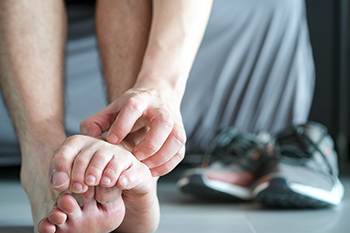
For many, athlete’s foot is a minor fungal infection, often treated with over-the-counter creams and a commitment to using care in damp environments, such as pool areas or locker rooms. In extremely rare cases, the fungus can penetrate deeper than the skin, spreading to the bones. Scientists recently identified a genetic defect in some individuals that can allow the fungus to spread this way, explaining why typical treatments may fail for them. If you have athlete’s foot, it is strongly suggested that you visit a podiatrist for appropriate treatment solutions and monitoring of potential complications.
Athlete’s Foot
Athlete’s foot is often an uncomfortable condition to experience. Thankfully, podiatrists specialize in treating athlete’s foot and offer the best treatment options. If you have any questions about athlete’s foot, consult with one of our podiatrists from DM Foot & Ankle Associates . Our doctors will assess your condition and provide you with quality treatment.
What Is Athlete’s Foot?
Tinea pedis, more commonly known as athlete’s foot, is a non-serious and common fungal infection of the foot. Athlete’s foot is contagious and can be contracted by touching someone who has it or infected surfaces. The most common places contaminated by it are public showers, locker rooms, and swimming pools. Once contracted, it grows on feet that are left inside moist, dark, and warm shoes and socks.
Prevention
The most effective ways to prevent athlete’s foot include:
- Thoroughly washing and drying feet
- Avoid going barefoot in locker rooms and public showers
- Using shower shoes in public showers
- Wearing socks that allow the feet to breathe
- Changing socks and shoes frequently if you sweat a lot
Symptoms
Athlete’s foot initially occurs as a rash between the toes. However, if left undiagnosed, it can spread to the sides and bottom of the feet, toenails, and if touched by hand, the hands themselves. Symptoms include:
- Redness
- Burning
- Itching
- Scaly and peeling skin
Diagnosis and Treatment
Diagnosis is quick and easy. Skin samples will be taken and either viewed under a microscope or sent to a lab for testing. Sometimes, a podiatrist can diagnose it based on simply looking at it. Once confirmed, treatment options include oral and topical antifungal medications.
If you have any questions, please feel free to contact our office located in Lemont, IL . We offer the newest diagnostic and treatment technologies for all your foot care needs.
